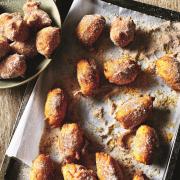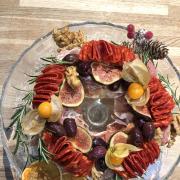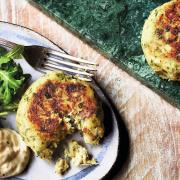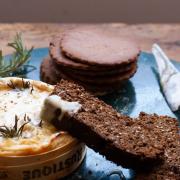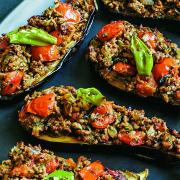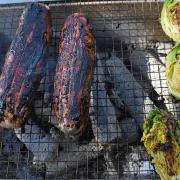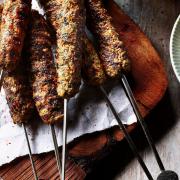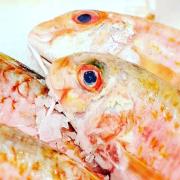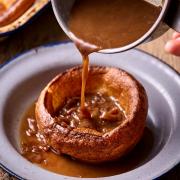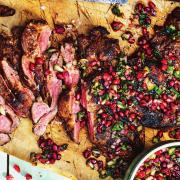Put some zing back into life by adding a delicious citrus tang to winter recipes and zest to pancakes on Shrove Tuesday, says our food and drink consultant Annie Stirk.
February tends to be a bleak cold month with home grown produce in short supply. So it is fantastic that just when we need it most, a brilliant splash of Mediterranean sunshine makes its appearance with an abundance of zesty citrus fruit from Spain, Morocco and Cyprus. This is the best time of year for oranges, lemons and grapefruit, and all other vitamin C packed citrus fruit – great for giving your immune system a much needed boost.My favourite oranges are the large sweet juicy Navels, or as they are sometimes called Navelinas. I really love to make the most of their short season simply peeled and sliced for a healthy breakfast or as a delicious fresh and tangy dessert.
Seville oranges are around too but they are just coming to the end of their season, so catch them while you can. They are far too tart to eat but their bitter acidity is ideal for making the very best marmalade.
Shrove Tuesday falls in February too and I love pancakes. Although there are lots of fillings and toppings such as syrup, chocolate and jam, I just like to keep it simple with a tried and trusted light sprinkling of caster sugar and several squeezes of zingy lemon juice. Making the pancake batter couldn’t be easier. My advice is double up on the quantities in the recipe because pancakes are addictive – enjoy!
Pancakes
Pancake Day or Shrove Tuesday falls between February 2nd and March 9th each year, depending on when Easter falls. This year Shrove Tuesday falls on February 16th.
Shrove Tuesday was invented to use up ingredients such as milk, butter and eggs which were given up for the big fast of Lent.
Lots of countries have their own version of the pancake. Some of the best known are: Crepes found all over France Chickpea flour socca of Nice The potato Latkes of Israel Spicy chickpea and black eye bean pancakes of Africa Russian buckwheat flour blinis
Zesty tips
Make the most of winter oranges – orange slices add sunshine to winter salads and go brilliantly with onion rings, olives, cucumber and watercress.
The juice from Seville oranges makes a great sauce for duck. The bitter acid fruit is a great foil for rich duck meat.
Fresh orange juice is a great marinade for white fish or salmon but do not leave it marinating too long because it will ‘cook’ the fish.
The best of orange and lemon flavours come from the essential oils in the thin outer layer of the fruits’ skin – the zest.
Always scrub, wash and dry fruit before using the zest and then use in sponge cakes and custards.
Add thin strips of orange zest to casseroles such as Beef Bourguignon.
Sprinkle orange wedges with oregano or thyme and tuck them under a plump chicken as it roasts, it’s delicious.
Try making a Gremolata. Finely chop equal quantities of garlic, parsley and orange or lemon rind and scatter over stews, casseroles or fish.
Plenty of finely grated orange and lemon zest adds zing to all kinds of stuffings.
Home made fresh orange juice can’t be beaten so make the most of the orange glut and get juicing.
LEMON PANCAKES
Serves 4
Ingredients110g plain flourA pinch of salt2 large eggs200ml milk mixed with 75ml waterButter for cooking 4 lemons, halvedCaster sugar
MethodPlace the flour and salt into a large mixing bowl.Make a well in the centre of the flour and break the eggs into it.Whisk the eggs and gradually incorporate the flour from around the edges.As the mixture thickens start to add small splashes of the milk and water. Continue to add all the mixture until you have a batter which is the consistency of single cream.Heat a small frying pan or crepe pan and then add a good teaspoon of butter and swirl it around to coat the bottom of the pan. Tip any excess butter onto a side plate.Continue to heat the pan but be very careful not to let the butter burn. Add about 3-4 tablespoons of the batter to the hot pan and immediately tip it around from side to side to evenly coat the bottom of the pan. The pancake base will cook very quickly so keep checking by lifting the edge of the pancake with a palette knife. Toss the pancake to cook the other side or flip it over with a palette knife or a fish slice.When each pancake is cooked slide it out of the pan onto a warm plate, cover with foil and keep warm in the oven. Continue to use the rest of the batter to make several more pancakes.Serve sprinkled with caster sugar and plenty of lemon juice.
ORANGE AND WHITE CHOCOLATE PUDDING
Serves 6
Ingredients500ml milk500ml double cream1 vanilla pod, split lengthways or a splash of vanilla extract3 medium eggs5 medium egg yolks200g caster sugar4 individual fruity brioche buns or 4 croissants, cut in half25g sultanas25g melted butter175g white chocolate, grated3 tbsp Cointreau3 tbsp orange marmaladeTo serveClotted cream or vanilla ice-creamSprig fresh mint, to garnish
Method Preheat the oven to 190C/gas mark 5. If using a fan oven, reduce to 180C/gas mark 4.Pour the milk and cream into a pan, add the vanilla pod and bring slowly to the boil.Break the eggs into a large mixing bowl with the egg yolks and sugar. Beat until light and fluffy.Spread the halved brioche buns or croissants with the marmalade and then lay over the base of a lightly greased ovenproof dish. Sprinkle with the sultanas and pour over the melted butter.When the cream mixture has reached boiling point, take it off the heat and allow to cool slightly. Whisk the egg mixture and grated chocolate into the cream. Set aside for a few minutes to allow the chocolate to melt, stirring occasionally.Add the Cointreau to the cream mixture and then strain through a sieve over the brioche or croissants. Remove the vanilla pod.Cover the dish with foil and bake in the oven for approximately 20 minutes or until the pudding is lightly set and browned.Serve with clotted cream or a scoop of ice cream and decorate with a sprig of mint.
ORANGES IN COINTREAU
Serves 4
Ingredients8 Navel oranges or similar large juicy oranges110g caster sugar100ml water75ml Cointreau
MethodSegment the oranges. This takes a bit of practice but it is well worth it. Cut a thick slice from each end of the orange and then with a sharp knife cut off the pith and the peel. Hold the fruit in one hand and with a sharp serrated knife cut out the orange segments between the membranes. Alternatively, just slice the orange into thick slices and then halve and quarter.Place the sugar, water and Cointreau into a small saucepan. Bring to the boil, cool and pour over the fruit.Chill well and decorate with a julienne of orange zest.Refrigerate and serve chilled with some pouring cream.



